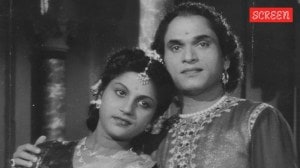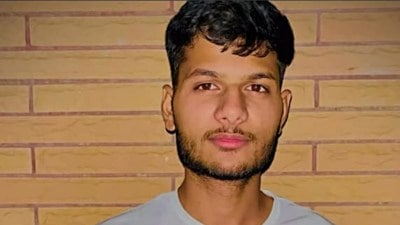Stay updated with the latest - Click here to follow us on Instagram
When Anoushka Played Anoushka
Sitarist Anoushka Shankars fingers have become extremely coarse and full of dark blue gashes.
Sitarist Anoushka Shankars performance in the Capital saw her nose-diving into depths of the classical tradition to present it as a populist package. This time,it worked
Sitarist Anoushka Shankars fingers have become extremely coarse and full of dark blue gashes a sign of playing the sitar extensively something that her father Pandit Ravi Shankar,and the great ustads of the stringed instrument would appreciate and refer to as an achievement. Visiting Delhi after a hectic Europe tour and a performance in Mumbai,one could not spot an iota of tiredness on Anoushkas brow. Dressed in a mirror work maroon kurta and turquoise skirt with her curly locks swinging with the reverbration of her sitar,Anoushkas performances may not have justified her illustrious lineage in the past,but her Sunday gig at Siri Fort organised by VH1 as a part of her recently released album,Travellers (Universal Music) promotion,can easily be called as the one that the music connoisseurs had been waiting for. Shankars spitting image,Anoushka did seem influenced by the notes her father has taught her and rightfully so,but developed her own style while edging towards interesting experiments with flamenco.
The moment Anoushka picked up Anoushka her sitar,that has been specially designed as one of the few sitars with the internal miking system,the bad acoustics of Siri Fort auditorium did not matter. She began with a pleasant alaap in the heptatonic raga Bhairavi,the most popular concert raga. During the pure classical bandish with Tanmay Bose on tabla,Pirashannah Thevarajah on mridangam and Sanjeev Shankar on shehnai,what came to fore were some extremely clear microtones. There were polished elements of kan and murki apart from a series of interesting meends (a technique of pulling the melody strings to produce microtonal notes),something that was missing in her past performances.
She was then joined by a flamenco troupe,comprising Sandra Carrasco on vocals,El Piranha on cajon drums (Spanish percussion instrument),Melon Jimmenez on Spanish guitar,and that is when she began to treat her sitar like a guitar,riffing away to glory to produce music of the gypsies. Bhairavi,one of the most popular Indian classical raga and flamenco are based on the same scales. We are trying to explore them together, said the Grammy-nominated artiste,who understood the meaning of collaboration well and gave space to her fellow musicians for some interesting improvisations and solos but had the audience gripped with her interesting slide technique. The Spanish musicians too,seemed to have grasped the nuances of Hindustani classical jugalbandi. The evening saw several impromptu pieces.
It is a difficult concert to appreciate as one has to decide between comparing this to her past performances or to that of her contemporaries. She has worked hard which shows in the clarity of the notes and her virtuosity in terms of speed was brilliant. She is lucky as she did not perform at a time when raga structures were more comprehensive and the same raga would be played for three hours. One will have to wait for her to explore a more in-depth,traditional side of Indian classical music too. It was nice to see her leading an entire ensemble of musicians.
She concluded with raga Jog that comprised a slew of jugalbandis and came across as a better composer than a performer. The partnership in resonance ended with a jhaala on sitar,creating a unique disposition. Before this,as the performance reached a crescendo,one knew that Anoushka is now on her own,finally.







